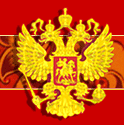Automatic
Automatic watches (or self-winding) are
watches with a mechanical movement which are wound by the
motion of the wearer's arm rather than through turning the
winding stem. A rotor that turns in response to motion winds
the watch's mainspring. If an automatic watch is not worn
for a day or two, it will wind down and need to be wound by
hand to get it started again. Typically, an automatic watch
will have a power reserve of up to 36 hours. Such watches
can last as long as 40 hours.
Hand-wound
A mechanical watch is powered by a mainspring
in a housing called a barrel. The mainspring when wound by
hand, unwinds very slowly, transmitting power to a system
of interconnected gearwheels called the gear train. This in
turn is connected to the escapement mechanism consisting of
a wheel and a pallet fork which transmits impulses to the
balance wheel, making it oscillate. This is the element which
makes the characteristic ticking noise. There is a further
train which moves the hands of the watch. A hand-wound mechanical
movement dates back to the 14th century. It is made up of
at least 130 parts assembled in the three main categories
which are:
the source of energy
the regulating parts
the display
The number of component parts is much higher
in so-called complicated watches (date, phases of moon, fly-back
hand, etc.). Most of “Poljot” watches are complicated.
Chronograph
Chronograph is a watch that includes a
built in stopwatch function - i.e., a timer that can be started
and stopped to time an event. There are many variations on
the chronograph. Some operate with a center seconds hand which
keeps time on the watch's main dial. Others use sub-dials
to time elapsed hours, minutes and seconds. “Poljot” uses
both. Some chronographs can be used as a lap timer (also known
as "flyback" and "split seconds"). The
accuracy of the stopwatch function will commonly vary from
1/5th second to 1/100th second depending on the chronograph.
Watches that include the chronograph function are themselves
called "chronographs." When a chronograph is used
in conjunction with specialized scales on the watch face it
can perform many different functions, such as determining
speed or distance (such as "tachymeter" and "telemeter".)
Do not confuse the term "chronograph" with "chronometer."
The latter refers to a timepiece, which may or may not have
a chronograph function, that has met certain high standards
of accuracy set by an official watch institute in Switzerland.
|

